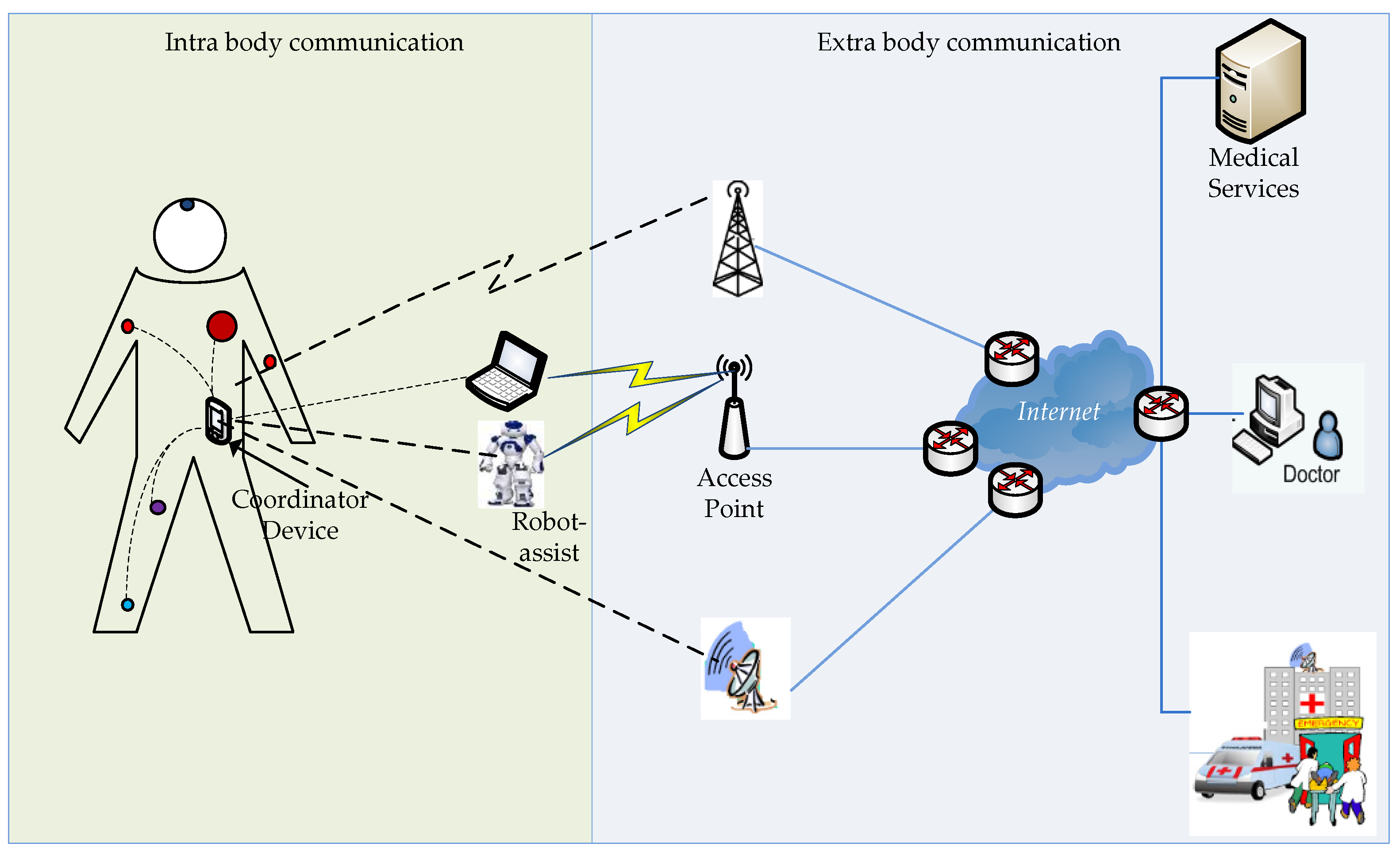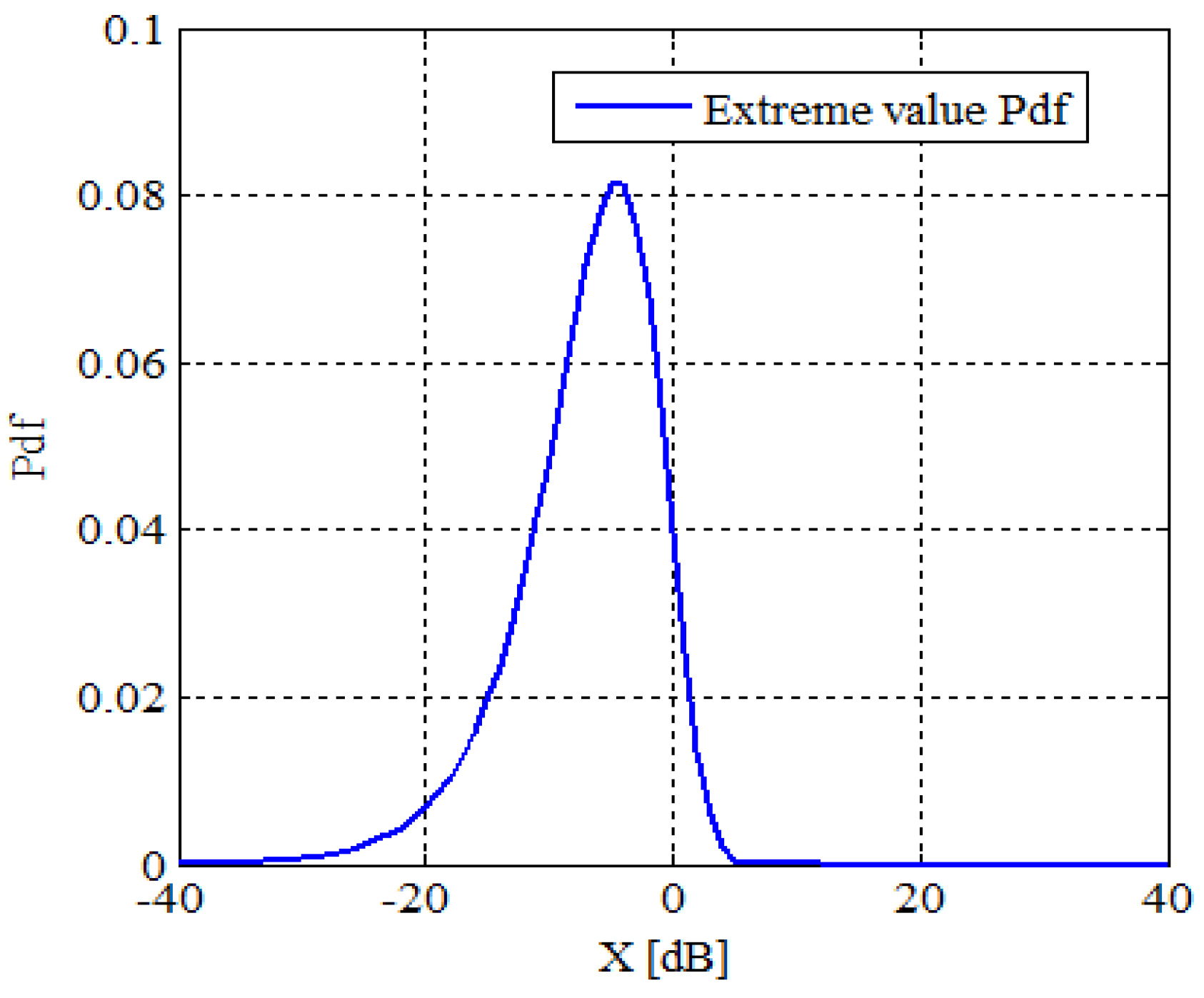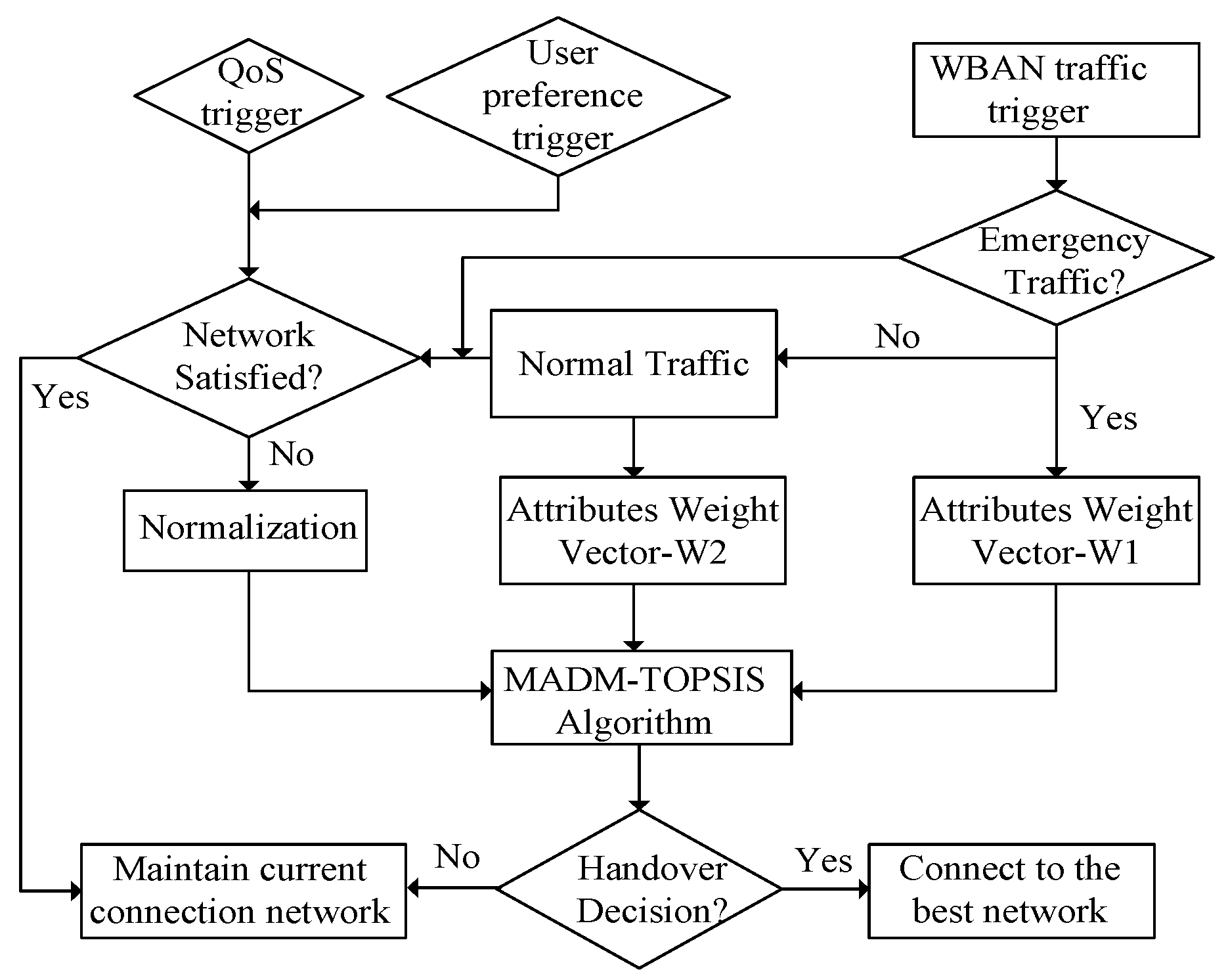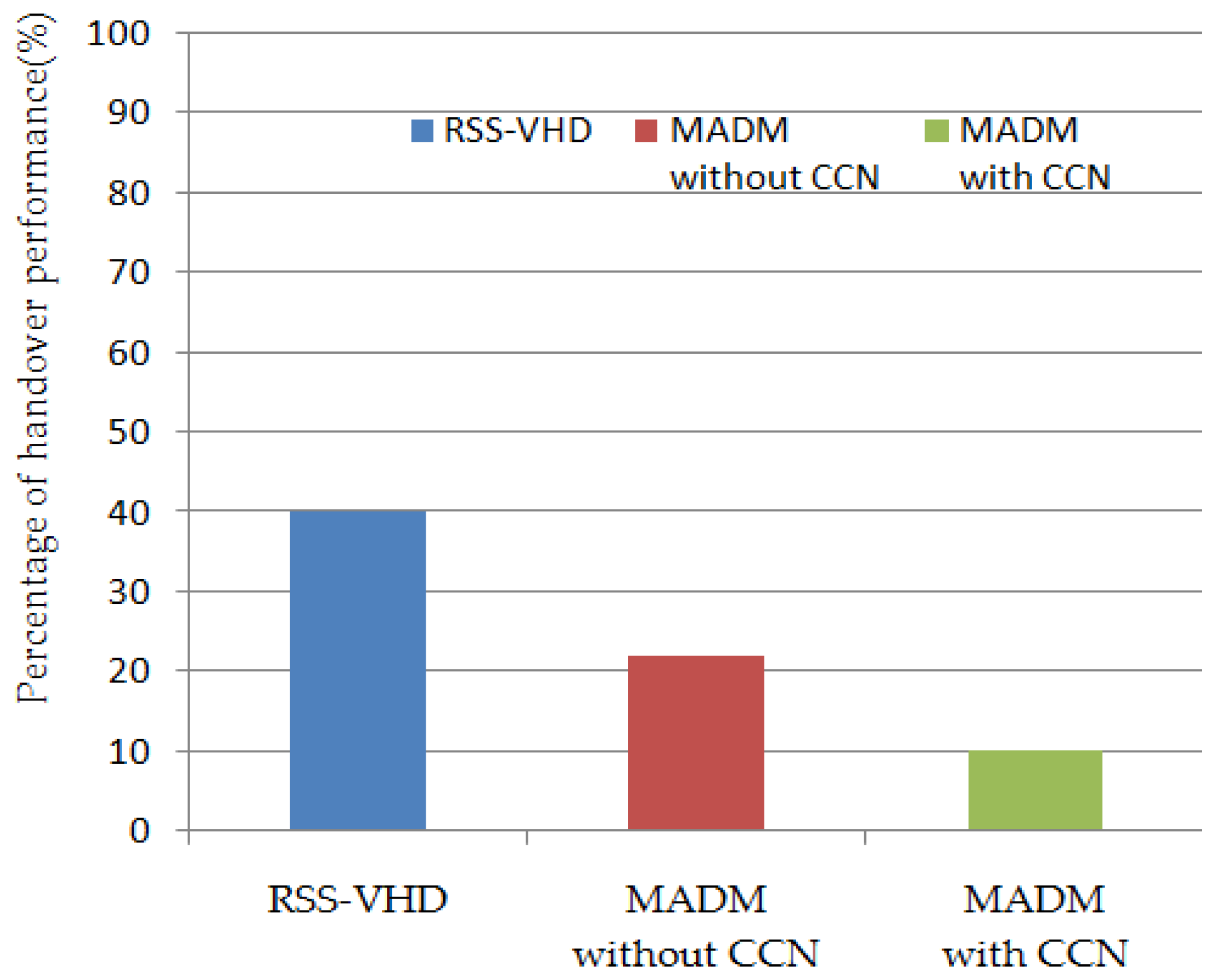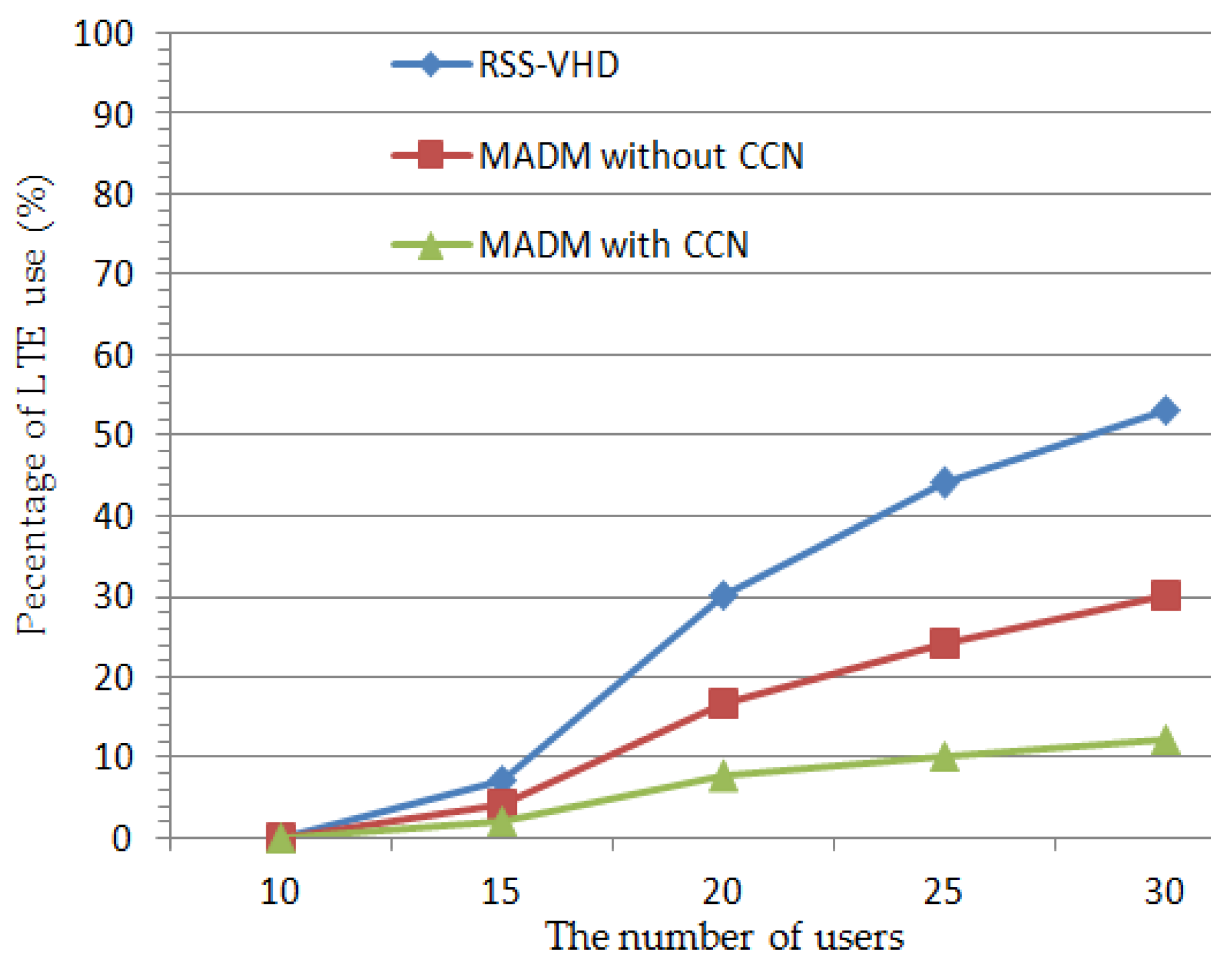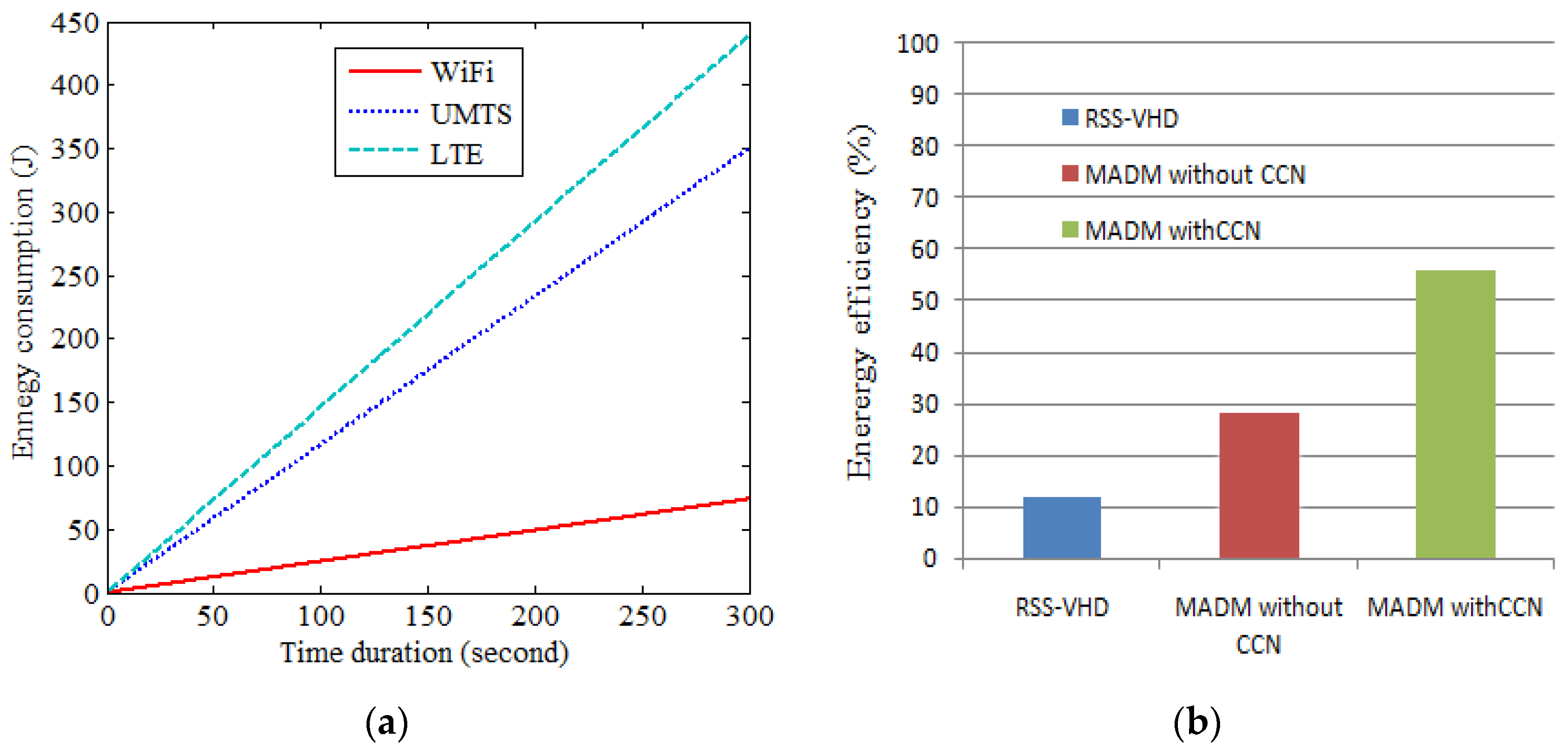2. Related Work
WBAN architectures are typically composed of three tiers, such as intra-body (tier-1), extra-body (tier-3) and inter-Body Sensor Network (BSN) communications (tier-2) [
7]. These WBAN communication tiers must efficiently deliver the data to the decision makers at the application side with QoS guarantees and must minimize energy consumption. Hence, many solutions have been proposed to support three-tier body sensor network communications; in this paper, we focus on the tier-3 aspect.
In extra-body communications, many wireless technologies have recently been investigated in WBAN applications for the purpose of ubiquitous healthcare. Internet/WiFi/Cellular networks are used in CareNet [
8], WiMoCA [
9], and MIMOSA [
10]. In more detail, CareNet effectively addresses reliability as well as privacy-preserving patient data transmission. With its flexibility, WiMoCA can fulfill diverse application requirements in an accurate and timely manner, whereas MIMOSA is a smart architecture for mobile terminals and is optimized for flexibility and low-power short-range radios. Furthermore, the authors in [
11] have proposed two novel network models by the integration of Zigbee with WiMAX and an LTE network. A network model with LTE achieved a lower delay transmission in comparison with WiMAX; however, they both can effectively support a high burst of data and are suitable for real-time data transmission. Similarly, an integration of WBAN and LTE has also been investigated to support high user mobility and reduce content delivery delay [
12]. In addition, an efficient content distribution scheme was presented to reduce costs and packet loss as well as the increase bandwidth efficiency by leveraging the benefits of Name Data Networking technology [
12,
13].
As mentioned previously, a solution that involves integration can help users to transmit/receive content at any time and from anywhere depending on the wireless network coverage in that place. However, these solutions of integration and interoperability will face great challenges in terms of their technological diversity, and one challenge is the handover problem [
14,
15]. Therefore, to clarify this problem, we also present some recent studies that pertained to our work.
For seamless and secure handoffs in wireless environments, handover decision making can be decided by a single metric or a combination of attributes from a network (bandwidth, Received Signal Strength Indicator (RSSI), security, data rate, latency and reliability) to user preferences and devices (monetary cost, user profile preference velocity and battery power) [
16]. A single metric is known as a horizontal handoff decision (HHD), which chooses the best network based on one attribute (e.g., the Received Signal Strength, RSS). The RSS approach proposed in [
17] is used in a comparison of the RSS thresholds that are measured by different mobile terminals. When the measured RSS of a wireless network falls below the defined thresholds, the handover procedures to 3G will be activated immediately afterward. Although HHD approaches are simple and easy to implement, they suffer many restrictions, such as unnecessary handovers, high-energy consumption and the ping-pong effect. A combination of attributes is known as vertical handoff (VHD), in which the decision parameters for handover not only consider poor RSS but also the availability of other networks that have better services. Many potential VHD schemes have been conducted in different categories to compare each algorithm to others in terms of complexity, flexibility and reliability, including User-Centric [
18], Markov [
19], Fuzzy Logic [
20], MADM [
21] and Game Theory [
22]. Among the existing VHD strategies, MADM is one of the schemes that based on strong multi-attributes to select the best from a list of available networks that have medium complexity and high flexibility. In this paper, we just focus on the Technique for Order Preference by Similarity to Ideal Solution (TOPSIS) approach that is selected to implement in our proposed algorithm [
23], with theaim ofselecting the best network in the available list based on multiple attributes with high accuracy in identifying the ranking. This approach deems that the best alternative should have the shortest Euclidean distance to the ideal solution and the farthest distance from the negative ideal solution.
Based on the studies mentioned above, this paper proposes an improvement of the MADM approach by leveraging the strengths to overcome the weaknesses of the existing TOPSIS methods and optimize the attributes before handovers by integrating the CCN module into the edge network elements [
24,
25].
Acknowledgments
This research is funded by the National Natural Science Foundation of China (No. 51675389 and No. 51475342).
Author Contributions
Qingsong Ai initiated the idea of the work, designed research scheme and provided the instructions during the performance. Dong Doan Van constructed the model and the algorithms and wrote the manuscript. Quan Liu supervised and helped with the work. All the authors have read and approved the final manuscript.
Conflicts of Interest
The authors declare no conflict of interest.
References
- Amin, R.; Islam, S.H.; Biswas, G.P.; Khan, M.K.; Kumar, N. A robust and anonymous monitoring system using wireless medical sensor networks. Future Gener. Comput. Syst. 2016. [Google Scholar] [CrossRef]
- Ullah, S.; Higgins, H.; Braem, B.; Latre, B.; Blondia, C.; Moerman, I.G.; Saleem, S.; Rahman, Z.; Kwak, K.S. A comprehensive survey of wireless body area networks: On PHY, MAC, and network layers solutions. J. Med. Syst. 2012, 36, 1065–1094. [Google Scholar] [CrossRef] [PubMed] [Green Version]
- Humax, I.; Ge, X.; Xiang, L.; Jo, M.; Chen, M. Rethinking Energy-Efficiency Models of Cellular Networks with Embodied Energy. IEEE Netw. Mag. 2011, 25, 40–49. [Google Scholar]
- Ge, X.; Hu, J.; Wang, C.X.; Youn, C.-H.; Zhang, J.; Yang, X. Energy Efficiency Analysis of MISO-OFDM Communication Systems Considering Power and Capacity Constraints. Mob. Netw. Appl. 2012, 17, 29–35. [Google Scholar] [CrossRef]
- Chen, M.; Gonzalez, S.; Zhang, Q.; Li, M.; Leung, V. A 2G-RFIG based e-healthcare System. IEEE Wirel. Commun. Mag. 2010, 17, 37–43. [Google Scholar] [CrossRef]
- Wallace, T.D.; Shami, A. A review of multihoming issues using the stream control transmission protocol. IEEE Commun. Surv. 2012, 14, 565–578. [Google Scholar] [CrossRef]
- Chen, M.; Gonzalez, S.; Vasilakos, A.; Cao, H.; Leung, V. Body Area Networks: A Survey. Mob. Netw. Appl. 2011, 16, 171–193. [Google Scholar] [CrossRef]
- Jiang, S.; Cao, Y.; Lyengar, S.; Kuryloski, P.; Jafari, R.; Xue, Y.; Bajcsy, R.; Wicker, S. CareNet: An integrated wireless sensor networking environment for remote healthcare. In Proceedings of the International Conference on Body Area Networks, Tempe, AZ, USA, 13–17 March 2008.
- Farella, E.; Pieracci, A.; Benini, L.; Rocchi, L.; Acquaviva, A. Interfacing human and computer with wireless body area sensor networks: The WiMoCA solution. Multimed. Tools Appl. 2008, 38, 337–363. [Google Scholar] [CrossRef]
- Jantunen, I.; Laine, H.; Huuskonen, P.; Trossen, D.; Ermolov, V. Smart sensor architecture for mobile-terminal-centric ambient intelligence. Sens. Actuators A 2008, 142, 352–360. [Google Scholar] [CrossRef]
- Hu, L.; Dung, O.M.; Liu, Q.; Han, T.; Sun, Y. Integration of Wireless Body Area Networks (WBANs) and WAN, WiMAX and LTE. KSII Trans. Internet Inf. Syst. 2013, 7, 980–997. [Google Scholar]
- Chen, M. NDNC-BAN: Supporting rich media healthcare service via named data networking in cloud-assisted wireless body area networks. Inf. Sci. 2014, 284, 142–156. [Google Scholar] [CrossRef]
- Hassan, M.M.; Lin, K.; Yue, X.; Wan, J. A multimedia healthcare data sharing approach through cloud-based body area network. Future Gener. Comput. Syst. 2017, 66, 48–58. [Google Scholar] [CrossRef]
- Fernandes, S.; Karmouch, A. Vertical mobility management architectures in wireless networks: A comprehensive survey and future directions. IEEE Commun. Surv. 2012, 14, 45–63. [Google Scholar] [CrossRef]
- Ahmed, A.; Boualahia, L.M.; Gaiti, D. Enabling vertical handover decisions in heterogeneous wireless networks: A state-of-the-art and a classification. IEEE Commun. Surv. 2014, 16, 776–811. [Google Scholar] [CrossRef]
- Gondara, M.K.; Kadam, S. Requirements of vertical handoff mechanism in 4G wireless networks. Int. J. Wirel. Mob. Netw. 2011, 3. [Google Scholar] [CrossRef]
- Vegni, A.M.; Tamea, G.; Inzerilli, T.; Cusani, R. A combined vertical handover decision metric for QoS enhancement in next generation networks. In Proceedings of the IEEE international Conference on Wireless and Mobile Computing, Networking and Communications(WIMOB), New York, NY, USA, 8–10 October 2009; pp. 233–238.
- Zekri, M.; Jouaber, B.; Zeghlache, D. A review on mobility management and vertical handover solutions over heterogeneous wireless networks. Comput. Commun. 2012, 35, 2055–2068. [Google Scholar] [CrossRef]
- Stevens-Navarro, E.; Lin, Y.; Wong, V.W.S. An MDP-based vertical handoff decision algorithm for heterogeneous wireless networks. IEEE Trans. Veh. Technol. 2008, 57, 1243–1254. [Google Scholar] [CrossRef]
- Chamodrakas, I.; Martakos, D. A utility-based fuzzy TOPSIS method for energy efficient network selection in heterogeneous wireless networks. Appl. Soft Comput. 2011, 12, 1929–1938. [Google Scholar] [CrossRef]
- Ning, F.; Zhang, P. A multiple attribute decision making-based access selection for heterogeneous WCDMA and WLAN networks. In Proceedings of the International Conference on Affective Computing and Intelligent Interaction (ICACII-2012), Taipei, Taiwan, 27–28 February 2012; pp. 15–21.
- Trestian, R.; Ormond, O.; Muntean, G.-M. Game theory-based network selection: Solutions and challenges. IEEE Commun. Surv. 2012, 14, 1212–1231. [Google Scholar] [CrossRef]
- Behzadiana, M.; Otaghsara, S.K.; Yazdani, M.; Ignatius, J. A state-of the-art survey of TOPSIS applications. Expert Syst. Appl. 2012, 39, 13051–13069. [Google Scholar] [CrossRef]
- Jacobson, V.; Smetters, D.; Thornton, J.; Plass, M.; Briggs, N.; Braynard, R. Networking named content. Commun. ACM 2012, 55, 117–124. [Google Scholar] [CrossRef]
- Van, D.D.; Mau, D.O. MS_CCN: Multi-source content centric networking. In Proceedings of the IEEE Information Technology, Networking, Electronic and Automation Control (ITNEC-2016), Chongqing, China, 20–22 May 2016.
- 802.15.6-2012—IEEE Standard for Local and metropolitan area networks–Part 15.6: Wireless Body Area Networks. Available online: http://ieeexplore.ieee.org/document/6161600/ (accessed on 29 February 2012).
- Skorin-Kapov, L.; Matijiasevic, M. Analysis of QoS Requirements for e-Health Services and Mapping to Evolved Packet System QoS Classes. Int. J. Telemed. Appl. 2010. [Google Scholar] [CrossRef] [PubMed]
- Bardella, A.; Bui, N.; Zanella, A.; Zorzi, M. An Experimental Study on IEEE 802.15.4 Multichannel Transmission to Improve RSSI-Based Service Performance. In Real-World Wireless Sensor Networks; Springer: Berlin/Heidelberg, Germany, 2010; pp. 154–161. [Google Scholar]
- Javaid, N.; Yaqoob, M.; Khan, M.Y.; Khan, M.A.; Javaid, A.; Khan, Z.A. Analyzing Delay in Wireless Multi-hop Heterogeneous Body Area Networks. Res. J. Appl. Sci. Eng. Technol. 2014, 7, 123–136. [Google Scholar] [CrossRef]
- Elhadj, H.B.; Elias, J.; Chaari, L.; Kamoun, L. Multi-Attribute Decision Making Handover Algorithm for Wireless Body Area Networks. Comput. Commun. 2016, 81, 97–108. [Google Scholar] [CrossRef]
- Chandavarkar, B.R.; Guddeti, R.M.R. Simplified and Improved Analytical Hierarchy Process Aid for Selecting Candidate Network in an Overlay Heterogeneous Networks. Wirel. Pers. Commun. 2015, 83, 2593–2606. [Google Scholar] [CrossRef]
- Tzeng, G.H.; Huang, J.J. Multiple Attribute Decision Making: Methods and Applications; CRC Press: Boca Raton, FL, USA, 2011. [Google Scholar]
- Agostino, M.D.; Dardanoni, V. What’s so special about Euclidean distance? J. Soc. Choice Welf. 2009, 33, 211–233. [Google Scholar] [CrossRef]
- Chandavarkar, B.R.; Guddeti, R.M.R. Simplified and improved multiple attributes alternate ranking method for vertical handover decision in heterogeneous wireless networks. Comput. Commun. 2016, 83, 81–97. [Google Scholar] [CrossRef]
- Huang, J.; Qian, F.; Gerber, A.; Mao, Z.M.; Sen, S.; Spatscheck, O. A Close Examination of Performance and Power Characteristics of 4G LTE Networks. In Proceedings of the 10th International Conference on Mobile Systems, Applications, and Services (MobiSys ’12), Ambleside, UK, 25–29 June 2012; pp. 225–238.
- Zhang, L.; Tiwana, B.; Qian, Z.; Wang, Z.; Dick, R.P.; Mao, Z.M.; Yang, L. Accurate Online Power Estimation and Automatic Battery Behavior Based Power Model Generation for Smartphones. In Proceedings of the Eighth IEEE/ACM/IFIP International Conference on Hardware/Software Codesign and System Synthesis, Scottsdale, AZ, USA, 28 October 2010.
- Mišuth, T.; Maroňák, I. Packet loss probability estimation using Erlang B and M/G/1/K models in modern VOIP networks. IU-JEEE 2012, 12, 1483–1491. [Google Scholar]
© 2017 by the authors. Licensee MDPI, Basel, Switzerland. This article is an open access article distributed under the terms and conditions of the Creative Commons Attribution (CC BY) license ( http://creativecommons.org/licenses/by/4.0/).
